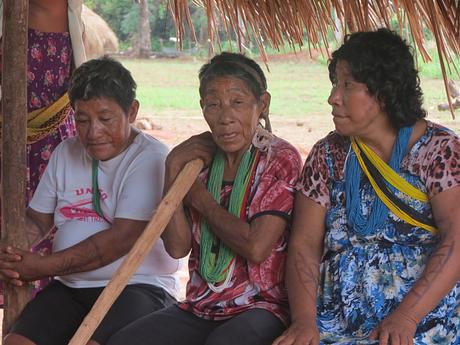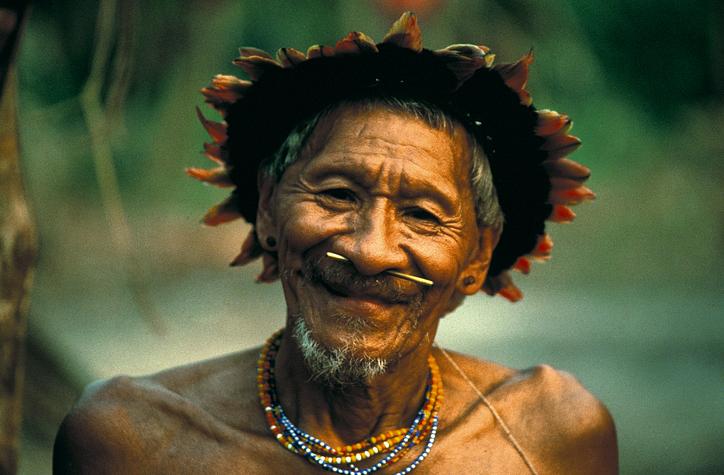The Arara call themselves Ukarangma, or ?red macaw people?. They number about 200 and are avid hunters and fishers.
The Arara Indians of Brazilian Amazonia are fighting for their survival
against waves of armed loggers, ranchers and colonists who are
destroying their forest homeland. Imprisoned within their own land, one
Arara described leading “a life of terror”; as the forest echoes to the
constant roar of chainsaws felling mahogany and other valuable
hardwoods.
How do they live? The Arara call themselves Ukarangma, or “red
macaw people”. They number about 200 and are avid hunters and fishers.
They also grow cassava, sweet potato, corn, bananas and pineapple in
communal gardens. When hunters return from a successful hunt, meat is
exchanged for fermented drinks and the whole community celebrates
together for several days, singing and playing flutes. For feasts and
rituals, the Arara paint themselves in stunning, bold designs using a
black dye called genipapo.
They live in large communal houses built from wood and palm fronds collected in the forest.
What problems do they face? The Arara’s recent history has been one of persecution and violent contact with jaguar skin hunters, rubber tappers, settlers and, latterly, loggers. For years they eluded contact
and fought hard to defend their land. FUNAI, the government’s Indian
affairs department, tried desperately to make contact with the tribe
throughout the 1970s before the Transamazonia highway cut through the
heart of their territory. Contact was finally made between 1981 and
1987. Today the Arara’s forests (which are rich in mahogany and other
hardwoods) are coveted by logging companies which have bulldozed roads
though their land. And the roads have attracted settlers. As the loggers
and settlers continue to destroy the forest, the game on which the
Arara rely is becoming scarce.
How does Survival help? In 1992, Survival and local NGOs
successfully campaigned for the dismantling of Bannach logging
company’s sawmill, built illegally in the heart of Arara land. This
finally happened in 1995.
Since the 1990s Survival has been campaigning for the recognition of Cachoeira Seca, the land belonging to the last group of Arara to be contacted, in 1987. In 2016, the Arara celebrated as Brazil’s President signed the decree establishing the reserve, as a condition of the construction of the Belo Monte dam, and in recognition of the Arara’s dependence on their land. The pressure is now on to remove the illegal settlers and keep them out for good.
Join the mailing list
There are more than 476 million Indigenous people living in more than 90 countries around the world. To Indigenous peoples, land is life. Find out more about them and the struggles they’re facing: sign up to our mailing list for occasional updates.
News from the Arara

A recently-contacted tribe is the 'most infected' in Brazil
The Arara people now revealed as the tribe with the highest known rate of Covid-19 infection in the Brazilian Amazon.
Arara Indians under 'threat of extinction'
A federal prosecutor has ordered FUNAI, the Brazilian government's Indian affairs department, to draw up a plan to recognise the land of a group of Arara Indians.
Arara Indians fight for land
The Arara Indians of Brazil are fighting to save their land, Cachoeira Seca (Dry Rapids). The territory has been invaded on a massive scale by settlers and loggers.

